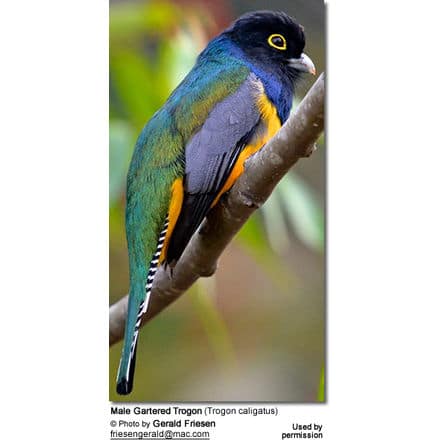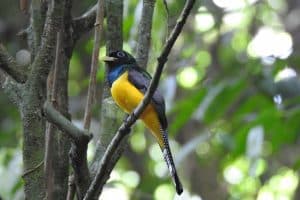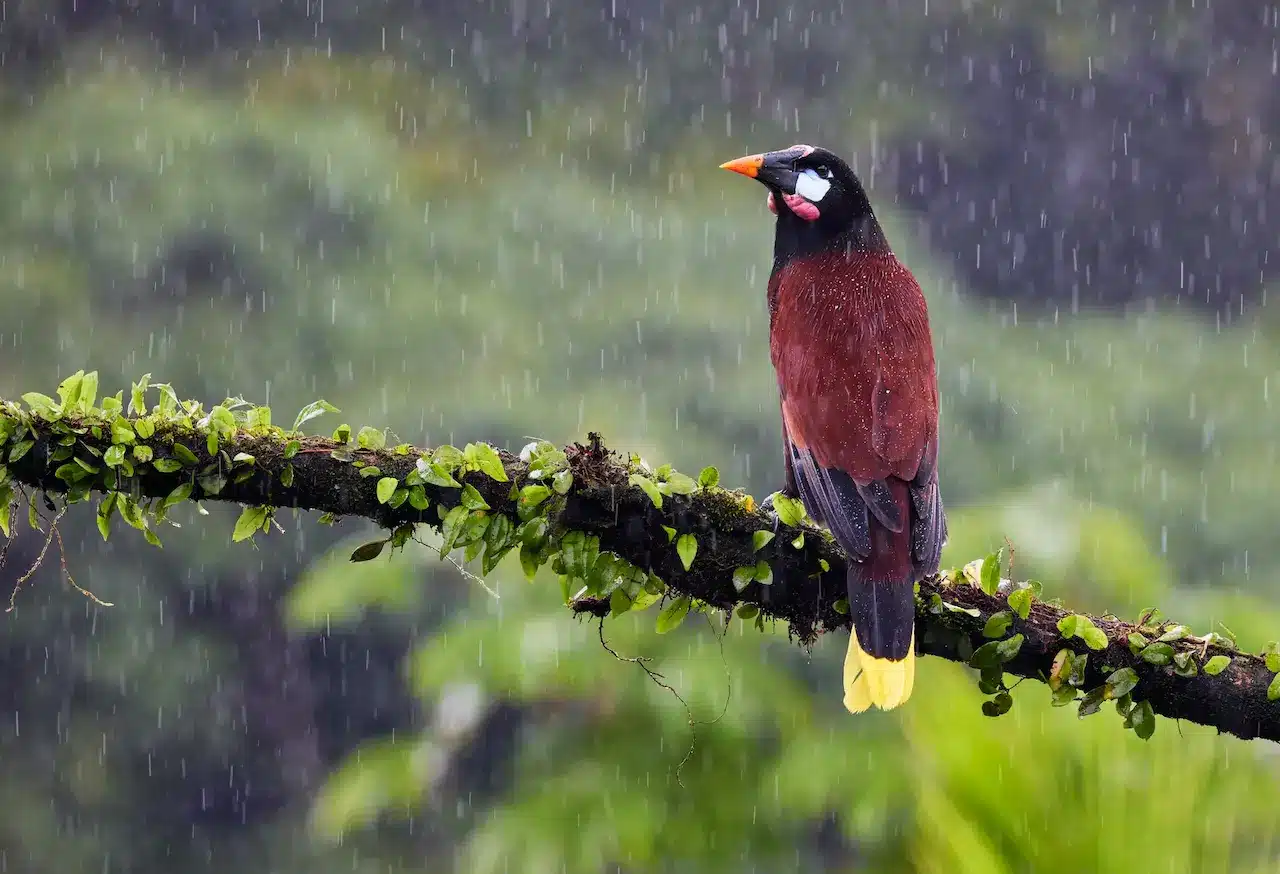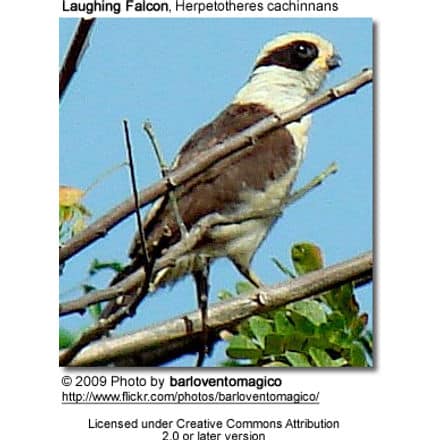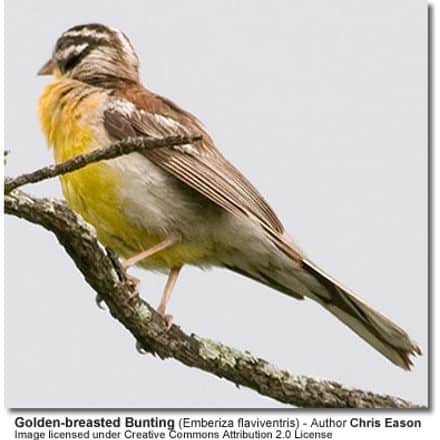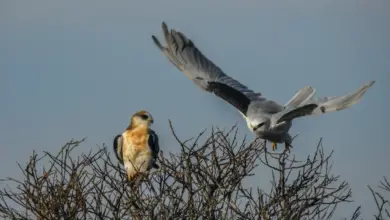Gartered Trogons, Trogon caligatus
The Gartered Trogons (Trogon caligatus)
Gartered Trogons were previously considered a subspecies of the South American Violaceous Trogon (Trogon violaceus); hence they were commonly referred to as the Northern Violaceous Trogons.
However, they have been separated based on genetic and vocalization data.
These trogons demonstrate a strange behavior that is commonly referred to as “anting.” This involves carving into ant nests and allowing ants to release formic acid on their bodies.
The reason for this strange behavior may be the control of feather parasites, such as feather mites, or to combat fungi or bacteria.
This being said, some believe that it might be quite possible that these birds gain some pleasure from this activity.
Gartered Trogons Distribution / Habitat
Gartered Trogons occur naturally in the forests of east-central Mexico – from San Luis Potosi, Puebla, Veracruz and Oaxaca; south along both slopes of Central America (including Yucatan) into northwestern South America, where they are found west or north of the Andes in northern Colombia, east to the Maracaibo basin in Venezuela and west and south to western Ecuador and northwestern Peru.
They are most commonly associated with various forest types (tropical evergreen, deciduous and savanna), but are also spotted along the forest edge, in plantations, mangroves or clearings with scattered trees – from sea level up to about 6,000 feet (~ 1,800 meters).
Gartered Trogons Subspecies and Ranges:
Three races have been identified that vary in size and the ratio of black to purple on the head.
Gartered Trogon (Trogon caligatus / Trogon violaceus caligatus)
ID: Vocalizations described as a slurred whistled cuh-cuh-cuh
Gartered Trogon (Trogon caligatus caligatus – Nominate form- Gould, 1838)
Range: Northern Colombia east to western Venezuela to the Maracaibo basin
Gartered Trogon (ssp. braccatus) (Trogon caligatus braccatus – Cabanis & Heine, 1863) – northernmost race
Range: Tropical southern Mexico (Oaxaca) to Costa Rica
Gartered Trogon (ssp. sallaei) (Trogon caligatus sallaei – Bonaparte, 1856)
Range: Eastern and Southern Mexico (along the Caribbean slope) – also along the Pacific slope of Southern Mexico; Belize, Guatemala, El Salvador, northern Honduras and possibly in Nicaragua and Costa Rica
Gartered Trogon (ssp. concinnus) (Trogon caligatus concinnus – Lawrence, 1862)
Range: Tropical Panama to western Colombia, western Ecuador and northwestern Peru
Gartered Trogons Description
Size
- Length (including tail): 9.1 – 9.8 inches (23 – 25 cm)
- Average Weight: 2 oz or 56/57 g
Plumage Details / Adults
Male: Deep, shiny, violet-blue head and neck; bright green back with a blue hue towards the rump; green scapulars (“shoulders”) and upper tail feathers. Blackish wings with some white, wavy lines; royal blue throat; orange yellow chest and belly. The undertail feathers have even black and white horizontal stripes and are broadly tipped “white”. There may be a thin white line separating the chest from the yellow abdomen.
Female: Head, back and chest are dark grey. Abdomen is a dull yellow belly. Thin black and white wing bars. White eyerings are broken above and below the eye.
Other Physical Details
- Eyerings: Yellow in the male and white / incomplete in females
- Bill: Broad, pale grey-green in color
Similar Species To Gartered Trogons
- White-tailed Trogons have blue eye rings, rather than yellow; they are also larger in size and have whiter tails. Male lacks barring in the undertail.
- The shade of the blue of the head in the male differs between the Violaceous Trogon and the Gartered Trogon, but they can most easily be differentiated by their different vocalizations: The Gartered has a slurred whistled cuh-cuh-cuh, and Violaceous has a soft cow cow, cow.
Gartered Trogons Diet / Feeding
They mostly feed on various small fruit, but will also task small animals, insects and their larvae.
Gartered Trogons Breeding / Nesting
Gartered Trogons are monogamous. These cavity nesters raise their chicks in large, active wasp, ant or termite mounts, in the holes of rotten trees or other easily excavated substrates.
It is speculated that nesting in arboreal nests of termites and ants offers them some protection against predators.
The average clutch contains two to three white eggs.
Alternate (Global) Names
Danish: Violethovedet Trogon … Dutch: Goulds Trogon … French: Trogon à lunettes jaunes, Trogon pattu … Italian: Trogone violaceo settentrionale … Polish: trogon wyzynny … Slovak: trogón stužkatý … Spanish: Sorocuá Violáceo Norteño … Swedish: Nordlig Violetthuvad trogon
Please Note: The articles or images on this page are the sole property of the authors or photographers. Please contact them directly with respect to any copyright or licensing questions. Thank you.

